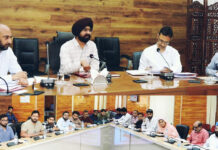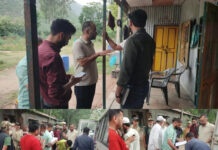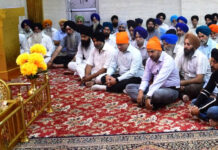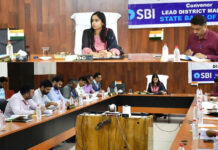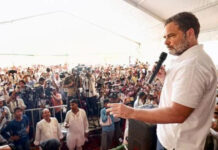Nestled in the serene landscapes of Jammu, Purmanda/Utter Behni, stands as a testament to the rich cultural and spiritual heritage of the Duggar region. This ancient pilgrimage center, with its storied past and profound religious significance, beckons devotees and history enthusiasts alike. Yet, despite its intrinsic value, Purmandal languishes in relative obscurity, yearning for the attention and care it deserves. Purmandal’s history is intertwined with the sacred Devika River, often hailed as the ‘Gupt Ganga’. The river, believed to have emerged from the matted locks of Lord Shiva, has drawn pilgrims for centuries, offering them solace and spiritual cleansing. The temples of Purmandal, particularly those dedicated to Lord Shiva and his consort Parvati, are architectural marvels, echoing the spiritual fervor of bygone eras. The exquisite stone carvings and ancient frescoes narrate tales of devotion and divine intervention, captivating the hearts and minds of all who visit. Among the most significant events in Purmandal’s religious calendar is the ‘Charri Yatra’ started under the aegis of Dogra sadar Sabha. This annual pilgrimage, celebrating the divine union of Shiva and Parvati, transforms the tranquil hamlet into a vibrant hub of activity. Devotees from across the region congregate here, participating in rituals, chanting hymns, and engaging in traditional music and dance. The Charri Yatra is not merely a religious observance; it is a cultural spectacle that reinforces community bonds and preserves age-old traditions. The Purmandal Charri Yatra, an event steeped in tradition and spiritual fervor, has its origins in the collaborative efforts of the Dogra Sadar Sabha, the Lakshmi Narayan Mandir management trust Gandhi Nagar, and Dharmarth Trust J&K. In 1995, these institutions, alongside representatives from the Purmandal area, including individuals from various religious communities, formed a committee namely Purmandal-Utter Behani Development Committee to reinvigorate this ancient pilgrimage. The Charri Yatra commenced in 1995, after performing puja of holy Chharies by then Governor of the state, General K. V. Krishna Rao, who, along with Thakur Gulchain Singh Charak and Karan Singhsole trustee of Dharmarth Trust J&K, performed the ceremonial puja of the holy Charries. These sacred Charries, made of silver and generously donated by the Shri Mata Vaishno Dev Shrine board, symbolizes the unity and devotion of the participating communities. Every year on Chaitra Chaturdashi the Charri Yatra embarks from the Rameshwar Temple, proceeding to the Lakshmi Narayan Mandir, and then visiting the Shiv Mandirs of Trikuta Nagar and Greater Kailash. This sacred journey continues to Data Ranpat Devsthan in Birpur and the Narsingh Mandir in Birpur. A remarkable feature of this pilgrimage is its stop at Kharah Madana, where people from different religious sects such as Sikhism, Islam, and Hinduism come together to offer refreshments and welcome the Charri, highlighting the religious harmony that has been a hallmark of the state since the era of Maharaja Ji. Upon reaching its destination, the Purmandal Temple, the Charries are placed for local devotees to offer their prayers and seek blessings. These remains there for two days, allowing ample time for darshan. The culmination of this spiritual journey occurs on the first Navratra, after Amavasya, when the Charries make there return to the Rameshwar Temple Jammu. Throughout this sacred procession, thousands of devotees participate, chanting the names of deities with joy and enthusiasm, embodying the rich cultural and religious tapestry of the region. The Purmandal Charri Yatra not only serves as a testament to the enduring religious traditions of the Dogras but also as a beacon of communal harmony and collective devotion. However, the contemporary reality of Purmandal paints a somber picture. Despite its historical and spiritual importance, the site suffers from neglect and underdevelopment. The lack of adequate infrastructure, poor road connectivity, and insufficient amenities deter many potential visitors. This is where the concerted efforts of the local administration, particularly the Deputy Commissioner (DC) of Samba, and the Tourism Department of Jammu, become crucial. DC Samba, along with the Tourism Department, must prioritize the development of Purmandal as a key heritage and pilgrimage site. The construction of better roads, improved public facilities, and informative signages can significantly enhance the pilgrim experience. Moreover, promoting Purmandal through various media channels can attract not only domestic tourists but also international visitors keen on exploring India’s rich cultural tapestry. The role of the Purmandal-Utter behani Development Committee cannot be overstated in this revitalization effort. The Committee, which already plays a pivotal role in managing the site, should be empowered with more resources and autonomy. By collaborating with governmental and non-governmental organizations, the committee can undertake restoration projects, organize cultural events, and provide educational tours that highlight the historical and spiritual significance of Purmandal. In conclusion, the time has come for us to recognize and rejuvenate Purmandal/Utter behani as a jewel of Duggar heritage. With the combined efforts of the DC Samba, the Tourism Department of Jammu, and the Purmandal-Utter behani Development Trust, this ancient pilgrimage center can be transformed into a thriving beacon of cultural and spiritual tourism. Let us honor our past by ensuring that the legacy of Purmandal shines brightly for future generations to cherish.

Dogra Herald is the media of J & K, breaking language and geographical barriers, connecting J & K to the rest of India.
0191 245 4946
info@dograherald.com
Latest articles
DGP sanctions financial assistance to COVID-19 affected police personnel
iamjkstarr - 0
In its efforts to provide financial assistance to the police personnel who were infected by COVID-19 pandemic during the prevailing pandemic, the Director General...
Crime Branch books JKAS officer, teacher for taking relief
iamjkstarr - 0
JAMMU: The Crime Branch Jammu has registered a case against female JKAS officer Neha Kashyap Pandita and her sister, Meenakshi Pandita, a...
Amarnath Yatra temporarily halted due to bad weather
The Amarnath Yatra was suspended on Friday due to bad weather as rain lashed many parts of Kashmir, officials said.


